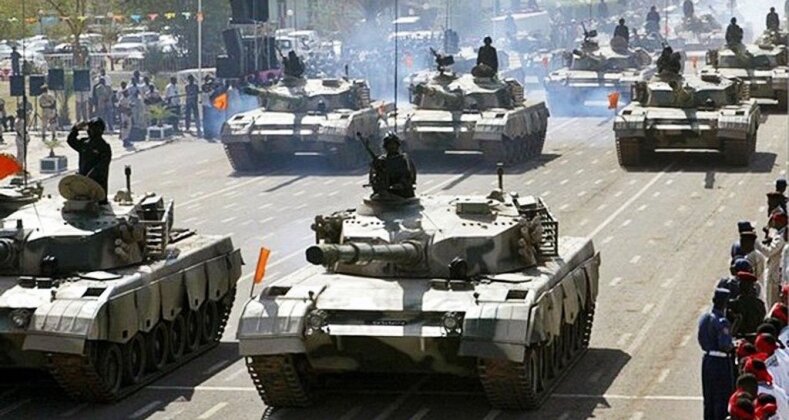News
How Sudan’s ‘Al Bashir’ Tank Crushed Ukrainian T-72s in Combat: The Most Dangerous African-Built Armour
Under the administration of President Omar Al Bashir, a former field marshal who came to power in 1993, the Republic of Sudan emerged over the next 25 years as a leading military industrial power in Africa with the third largest defence sector on the continent centred primarily around the state-run Military Industrial Corporation. The country was a significant arms exporter across Africa and the Middle East, while its own armed forces through acquisitions primarily from Russia and Belarus came to be considered among the best equipped and trained on the continent, a notable example being its air force which was one of the first alongside Algeria, Morocco and South Africa to deploy active radar guided air to air missiles. Although foreign arms acquisitions came primarily from the former Soviet Union, however, the Sudanese defence sector relied mainly on Chinese support for its establishment with its most high end product, the Al Bashir main battle tank, being a sister design to the Type 96 in production in China today after both were developed based on the Type 85 design.

The Type 96 was developed to bring the Chinese People’s Liberation Army’s armoured units up to a similar standard as the latest Soviet and Western armour, and first entered service in 1997. It serves as a lighter and cheaper counterpart to the Type 99A – a tank considered among the world’s foremost but reserved for elite units. The Type 96’s capabilities are comparable to the Russian T-72/90 with both using a 125mm gun and an autoloader, allowing them to operate with just three crew rather than four. As China’s largest trading partner in Africa Sudan was the only export client for the Type 96 or its derivatives, with these assembled under license in the country marking it one of several clients to have been offered similar packages by Chinese defence firm Norinco. Although doubts were raised regarding the performances of Chinese third generation armour, as well as whether those built in Sudan matched the originals, the Al Bashir tank fielded from around 2006-2007 proved highly capable in combat against South Sudanese forces’ Ukrainian-supplied armour.

Battles between the two Sudans represented one of the few engagements between Chinese and Russian tanks, following clashes in the Iran-Iraq War which saw the Iranian Army equipped with much less capable Chinese platforms to counter an Iraqi invasion spearheaded by T-72s and T-62s. In 2012 South Sudan deployed T-72AV tanks and accompanying training for its crews through Ukraine, with these being overwhelmingly more capable than the Cold War era Type 59 tanks that Sudan had previously relied on. They were nevertheless soundly outmatched by the Al Bashir. Upon engaging four T-72AVs were destroyed, with two suffering extreme damage, while the Al Bashir tanks suffered no losses and no serious damage. This was largely because the T-72AV was a less capable T-72 variant, only slightly more capable than those in Iraqi hands had suffered tremendous losses in the Gulf War.
Modern fire controls including automatic lead for increased precision and third generation image intensifiers, as well as access to more modern penetrative rounds, were key advantages for the Al Bashir. The tank was at the time the most capable China had ever exported, and today remains the most potent in Sudanese service with its differences from the original Type 96 remaining unknown. Sudan for years represented the only African or Arab country producing main battle tanks, although the Al Bashir’s status in production has been uncertain since the overthrow of the Sudanese government in a Western-backed coup in April 2019. The aftermath saw considerable pressure from Western capitals to strip the armed forces of their industrial assets, and the Military Industrial Corporation’s foreign sales website giving details on the vehicles and other products was soon afterwards taken down.












